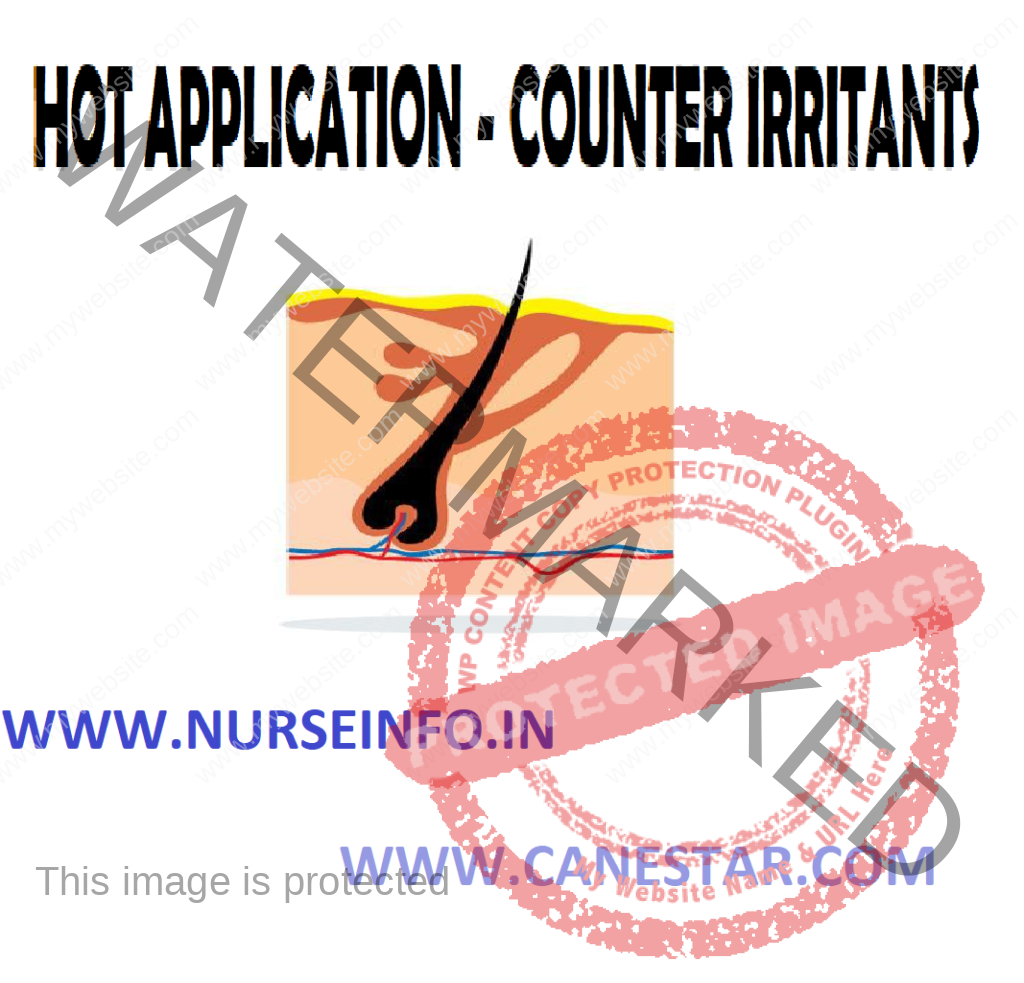COUNTERIRRITANTS (Hot Application) – Purpose, Classification, Preliminary Assessment, Preparation of Patient and Environment, Equipment, Procedure and After Care
A counterirritant is a substance which dilates superficial blood vessels to relieve or counteract other deeper inflammation, which is turn produce the constriction of deeper vessels.
Counterirritants are drugs, when applied to the affected part, caused irritation on inflammation thereby relieving deep seated pain, congestion and inflammation.
Purpose
- To relieve congestion
- To relieve irritation by promotion free circulation in the part
- To relieve pain
- To cause absorption and removal of inflammatory products
Classification of Counterirritants
- Rubefacients: these merely redden the skin by vasodilatation. These act quickly their action lasts for a short time, e.g. mustard turpentine liniments
- Vesicants: these help blister formation on skin, e.g. Tr. Iodine
- Escharotics: they destroy the tissues and help them slough away, e.g. silver nitrate
- Pustulants: they produce pustules on skin and are rarely used, e.g. cotton seed oil and antimony
Preliminary Assessment
Check
- The doctors order for any specific precautions
- General condition and diagnosis of the patient
- Self-care ability of the patient
- Severity and extent of the injury
- Type method and duration of medication applied
- Articles available in the unit
Preparation of the Patient and Environment
- Explain the procedure to the patient
- Provide privacy if needed
- Arrange the articles at the bedside
- Position the patient comfortably
Equipment
- Adult-mixture of ½ dram turpentine and 2/3 at sweet oil
- Children – mixture of 1 part turpentine and 10 part sweet
Swab sticks
Kidney tray and paper bag
Screen
Procedure
- Hand wash
- Fan folds the top bedding and exposes the required part only
- The mixture should be well mixed
- Apply the warm oil mixture with swab stick
- Apply it from xiphist sternum to the symphysis pubis
- Apply the mixture in a single layer and do not rub it
- Apply the hot compresses (medical fomentation)
- After 10 to 15 minutes, insert the flatus tube and watch for the expulsion of gases
After Care
- Remove the articles from the bedside
- Position the patient comfortably
- Replace the articles after cleaning
- Hand washing
- Record the procedure in nurse’s record sheet
Thermotherapy widens blood vessels and increases blood flow to the skin. It relaxes superficial muscles, decreases muscle spasm and reduces stiffness of joints. Moist heat appears to be more effective in treating pain than dry heat, as the moisture allows the heat to penetrate more deeply into the muscle. Thermotherapy is frequently used combination with other therapies to relieve pain, such as hydrotherapy (water therapy). In many cases, cryotherapy (cold therapy) is used to reduce inflammation before thermotherapy is used to increase blood flow to muscles.


